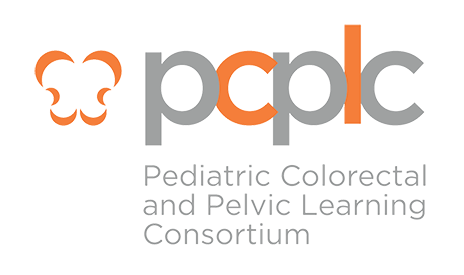CONDITIONS
INCONTINENCE
-
LONG TERM CARE FOR FECAL INCONTINENCE
Constipation and fecal incontinence are not uncommon childhood occurrences. Fecal incontinence is often defined as the involuntary loss of formed, semi-formed or liquid stool after age four years. Encopresis is the accidental loss of control of the bowels in children related to constipation and fecal impaction (pseudoincontinence). This usually results in stool staining in the underwear. In any child with fecal incontinence or encopresis, there are multiple factors that can lead to soiling:
- Abnormal pelvic and/or anorectal muscle development — This can result from anorectal malformations.
- Abnormal nerve development — this may be an associated abnormality that occurred prenatally with the abnormal muscle development or it may have resulted from a separate congenital neurologic/spine abnormality (e.g., tethered cord or spina bifida). Abnormal nerve development in children born with an anorectal malformation will cause difficulties with both the sensation and function of the bowel and bladder. In addition to congenital nerve formation, injuries to the nerves can also occur after birth in situations of trauma or cancer.
- Chronic constipation — If your child has no abnormalities in nerve or muscle development, chronic constipation can decrease their ability to sense the need to stool which can lead to pseudoincontinence. Improving stool evacuation and constipation can improve rectal sensation and therefore improve continence.
With adequate diagnostic testing, a prediction can be made in the newborn period as to whether or not a child born with an anorectal malformation has a reasonable chance for fecal continence. Even in children diagnosed with an anorectal malformation or Hirschsprung disease, toilet training can be started at the usual age, around three years old. Children born with an imperforate anus generally gain bowel control more slowly than children without a congenital abnormality. Depending on the type of malformation and the operations required for repair, some children have difficulty maintaining good bowel control, and may need to participate in a comprehensive bowel management program.
Bowel incontinence ranges from an occasional leakage of stool while passing gas to a complete loss of bowel control. If left untreated, bowel-control problems in children and young adults can result in social isolation, low self-esteem and a diminished quality of life. In order to prevent these complications, bowel management programs have been developed for children who have difficulties with incontinence. The goal of a bowel management program is to clean the colon of stool effectively every day in order to prevent accidents. Bowel management will use different modalities to help achieve fecal continence such as:
- Medicines– Both antidiarrheal and laxative medications can be helpful in different patients to achieve artificial continence as part of a comprehensive bowel management program.
- Dietary– Increasing the amount of soluble fiber often be helpful in a comprehensive bowel management program
- Modifications in toilet habits/starting a timed sitting regimen
- Enema therapy– Depending on the underlying condition, some children benefit from daily enema therapy, which induces a complete emptying of the colon. For many patients, effective daily enema therapy prevents accidental soiling and allows the child to transition back into regular undergarments. This type of therapy also addresses issues of chronic constipation. With certain constipated patients, as the child matures, laxative therapy can replace enema therapy as daily treatment.
- Biofeedback– In the older child, biofeedback can be useful to coordinate the stooling mechanisms
- Sacral nerve stimulation (sacral neuromodulation)- Mild electrical pulses are delivered to the pelvic nerves, anal canal and lower part of the colon and the bladder to improve voiding control. This is often used as a last resort after other medical and behavioral interventions have failed. Though this approach appears to hold promise for some patients, the exact mechanism of action is poorly understood and the long term effects are unknown.
- Surgery– Surgical intervention is sometimes indicated to improve fecal continence. Patients who have shown success with bowel management using rectal enema therapy, are candidates for surgical intervention in which an appendicostomy or cecostomy is created. One common appendicostomy procedure is also known as the Malone antegrade continence enema (MACE) procedure and involves connecting the appendix to the umbilicus to create an access site to the colon through a small skin opening (stoma). Through this stoma, a catheter is passed into the colon through which an enema is given while the patient sits on the toilet. A cecostomy is another similar procedure that eliminates the need for rectal enemas and allows a child to become more independent with their medical needs.
A small percentage of patients with severe constipation resulting in pseudoincontinence due to dysmotility of the colon may need surgery to remove part of the colon.
Some institutions have extended formal Bowel Management Programs implemented over a one-week period dedicated to attaining fecal continence. An effective bowel management program will improve your child’s quality of life and function. Formal Bowel Management Programs are outpatient programs in which both parents and children are taught how to empty the colon daily in order to be free of accidents.
The weeks begin with diagnostic studies pre-determined by a multidisciplinary team. The patient and family then meet with the team to determine the appropriate treatment plan. This plan may include enemas, anti-diarrheal agents, laxatives, fiber or dietary changes.
Daily abdominal x-rays are obtained to visualize the effectiveness of each day’s treatment. The team reviews the x-rays daily. The parent or patient is in contact with a team member daily to report the response to treatment and be advised of changes that need to be made to the next day’s treatment.
At the end of the week, the majority of patients will be on a program that effectively empties the colon and keeps them accident-free.
-
CONSTIPATION WITH FECAL INCONTINENCE WITHOUT ANORECTAL MALFORMATION (PELVIC TUMOR, SPINAL CORD INJURY, CONGENITAL SPINAL CORD DISORDER)
Patients who suffer from this condition are managed using the general principals used for bowel management in children born with anorectal malformations.
-
LONG TERM CARE FOR URINARY INCONTINENCE
Patients with anorectal malformations not infrequently have associated urologic problems. Each patient needs a complete urologic evaluation, and any identified issues such as a single kidney, hydronephrosis, vesicocureteral reflux or neurogenic bladder need to be followed closely. If this does not occur, some children with anorectal malformations can develop permanent renal injury.
Several factors may result in renal injury. The most common is bladder dysfunction. Other causes include infection, vesicoureteral reflux and outflow obstruction. Kidneys that are injured from birth or that have become injured over time may support renal function quite well until the child begins to grow. As the child grows, the metabolism of the body may overwhelm the kidneys’ ability to keep up with demand. Symptoms of renal failure or laboratory tests which demonstrate impaired function may not become obvious until this time. Unfortunately, it is often too late to reverse the process and preserve good renal function at this point. Much of this renal injury can be prevented with early detection. The status of the kidneys should be known in every patient with an anorectal malformation. Patients at highest risk include those with more complex anorectal malformations (recto-bladder neck and rectoprostatic fistula and cloacas), patients who have tethered cord and patients who have urinary infection or voiding abnormalities. Such patients should have a complete evaluation to exclude neurogenic bladder. These patients should be followed at regular intervals with ultrasound examinations. Other testing may be required based on the outcome of the initial evaluation, symptoms, follow-up ultrasound, urodynamics and bloodwork. Urodynamics are tests that are used to help determine whether or not a child has a neurogenic bladder. These studies assess the child’s voiding pressure, time to void, straining pattern and whether or not they adequately empty their bladder. Sometimes x-ray pictures are taken while the bladder fills and empties to completely assess the function of the bladder.
There are several conditions that require urinary tract reconstruction. In general, these should be performed by a surgeon familiar with anomalies encountered in patients with ARM, as urinary tract reconstruction in children with ARM is very different from standard reimplant surgery or even a reconstruction in a child with spina bifida.
Vesicoureteral Reflux (VUR):
In the child with ARM, vesicoureteral reflux (VUR) can be a sign of neurogenic bladder. If this is the case, there is high likelihood that the reflux will improve with bladder management alone. It is crucial that no attempt at surgery is made until it is proven that the bladder is normal.
Hydronephrosis (swelling of the kidney):
Obstruction of the kidneys is rare in the patient with ARM. Often it is due to a primary bladder problem. Hydronephrosis after ureteral reimplant may be the result of an undiagnosed or inadequately treated bladder problem.
Incontinence:
In the child with ARM, urinary incontinence could be caused by a weak urinary sphincter or because of an abnormal bladder. Urodynamic studies performed by your surgeon will help identify the true cause.
-
LONG TERM GYNECOLOGIC CONSIDERATIONS
As mentioned earlier, girls with ARM should have an assessment of their reproductive tract during their initial evaluation and repair. Important preliminary information will be gained during this time about their anatomy which relates to sexual health and reproductive potential.
Puberty is an important time for all girls, but particularly those with an ARM. If the girl’s overall health is good, puberty should happen at the normal time and begins with girls growing taller and developing breasts and pubic hair. The ovaries produce estrogen which causes linear growth, breast development, and growth of the female reproductive structures. Radiologic studies (pelvic ultrasound or MRI) are much better at identifying uterine structures and potential for menses and pregnancy at this time. Puberty marks an opportunity to confirm reproductive anatomy and gain information about functioning and reproductive potential. The first menses (or period) marks the culmination of puberty for a girl. Seeing the menstrual blood demonstrates she has successfully moved through puberty, the uterus is present and makes blood (and therefore has potential to support a pregnancy), the uterus is connected to the vagina, and that the vagina is open to the skin to allow for the menstrual blood to come out. While seeing the first period is great cause for celebration, we always want to make sure that there is no obstruction in the female reproductive tract and that all menstrual blood is getting out. Any obstruction along this path can lead to pain and endometriosis and will eventually need to be treated surgically. It is important for long term reproductive health to identify an obstruction as soon as possible. If a young girl moves through puberty and doesn’t see a period, she needs evaluation for both obstruction and absence of her uterus.
Girls with ARM need appropriate anticipatory counseling about menstrual hygiene, sexuality, and contraceptive options. Depending on their original malformation, overall health, associated anomalies, reproductive tract anatomy, and type of repair, these may be small or large considerations. Understanding their own anatomy and assessing the size of their vaginal opening may be important prior to tampon use or penetrative vaginal intercourse.
Both girls and parents of girls with ARM have concerns about the likelihood and safety of a pregnancy. The good news is as this group of patients ages, they are living very full lives which often include parenting, potentially through being pregnant themselves. Pre-conceptual care and planning for young women with ARM is very important to both assess the risk of becoming pregnant and optimizing the chance of a healthy outcome. This information is very specific, depending on overall health, original type of ARM and repair, associated anomalies, and reproductive tract anatomy. We are learning more about obstetrical outcomes in young women with ARM as more of them start their families by becoming pregnant. Information about labor and vaginal delivery versus a planned cesarean section is limited, however, we currently recommend women with either a repaired cloacal malformation and/or a vaginal replacement delivery by cesarean section.

